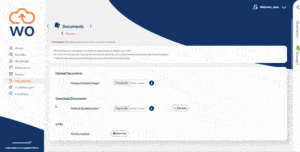Does your business still handle onboarding via emails and paperwork having to be be posted out to each new starter?
If so, the upcoming end of the financial year provides an ideal time to review your strategy – to explore the potential benefits of moving to a cloud-based approach.
Because in the hectic world of business, the end of the financial year is a time when an organisation can take stock – both literally and metaphorically.
It’s a chance to look at current processes and to identify ‘easy wins’ – practical ways to improve organisational performance over the next 12 months.
What is employee onboarding?
Employee onboarding covers all of the HR tasks that are required to turn successful job applicants into employees. This is a critical phase of the hiring process, involving everything from contracts and reference checks to welcome packs and all the administration required to prepare for a new starter’s first day.
What’s the problem with onboarding?
Onboarding is one of the few areas of business administration that’s still being handled using paper-based and manual processes. This means that hiring teams have to manage all of the onboarding information manually – posting out documents and welcome packs, sending emails and making calls.
A recent survey by Webonboarding found that this traditional management approach is still being used by more than two thirds (68 percent) of UK businesses.
This creates problems because it’s an inherently slow and inefficient way to work. It will often take weeks to fully complete the process with HR having to chase missing paperwork and rely on the vagaries of the postal service.
It means that hiring teams are having to devote time to slow and error-prone tasks as employee information is manually created, input and transferred during the onboarding process.
How can this impact on a business?
The most obvious negative impact is the time and resources that are wasted when onboarding is handled manually. Using a traditional approach, it’s estimated that onboarding eats up almost a quarter (24 percent) of HR management time.
Related to this is the problem of successful candidates dropping out as a result of long and frustrating onboarding experiences. The longer the onboarding process takes, the higher this risk of dropout becomes.
Many times, hiring teams only find out about this when the candidate fails to show up for their first day. This problem on ‘non-boarding’ is a growing issue that causes financial losses and organisational disruption.
Added to this are a whole range of ways in which onboarding inefficiency can damage an organisation. The experience employees have as they enter a company play an important role in molding their future relations.
What’s the alternative?
Digital onboarding systems are transforming the way that new hires can be handled. Webonboarding uses an online portal to provide a completely paperless way to manage all of the communications required between HR, hiring managers and new starters.
The use of secure digital signatures removes the need for any physical copies of contracts or paperwork to be sent out. It means that a process which has typically taken weeks to complete, can now be done in a matter of days.
Handling communications digitally also allows HR teams to manage and monitor information in real-time, they can track the status of each and every stage of the onboarding process.
How can digital onboarding help meet the challenges of 2019/2020?
There’s one prediction that can be safely made for the next financial year – that recruitment will become even more competitive. This is thanks to already record high levels of employment combined with the uncertainties caused by Brexit.
Competitive Market
It’s a hiring environment in which organisations who use a traditional approach to onboarding are going to find themselves increasingly disadvantaged. In a candidate driven market any kind of inefficiencies are likely to prove costly.
A 2017 study, commissioned by Webonboarding, found that 39 percent of employees encountered problems during onboarding, causing 14 percent to dropout. With more candidates having more than one job offer, this will become an even greater risk.
GDPR compliance
Another challenge facing onboarding is compliance – particularly the demands of GDPR (General Data Protection Regulation). The EU laws were introduced in May of 2018 but it’s only now that their full ramifications are being understood.
The regulations require hiring teams to have an unprecedented level of control over the employee related data that’s collected during onboarding. The inefficiencies of a paper-based approach create significant risks from human errors and information becoming scattered across multiple documents and formats.
The risks of breaching GDPR laws are already being seen with a number of organisations, including Google, being prosecuted for failing to work within the revised legislation.
How can I find out more about digital onboarding?
If your organisation is considering switching to a digital onboarding approach, the best way to understand the benefits is to take it for a test ride. Webonboarding provides a free consultation and trial period to help you make an informed decision. Contact us for more info here.




